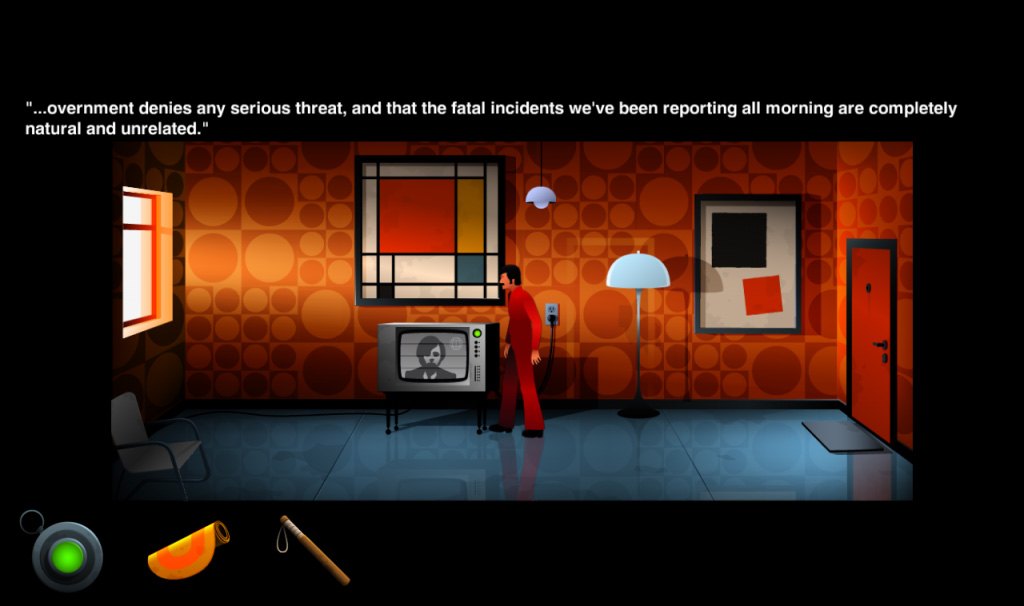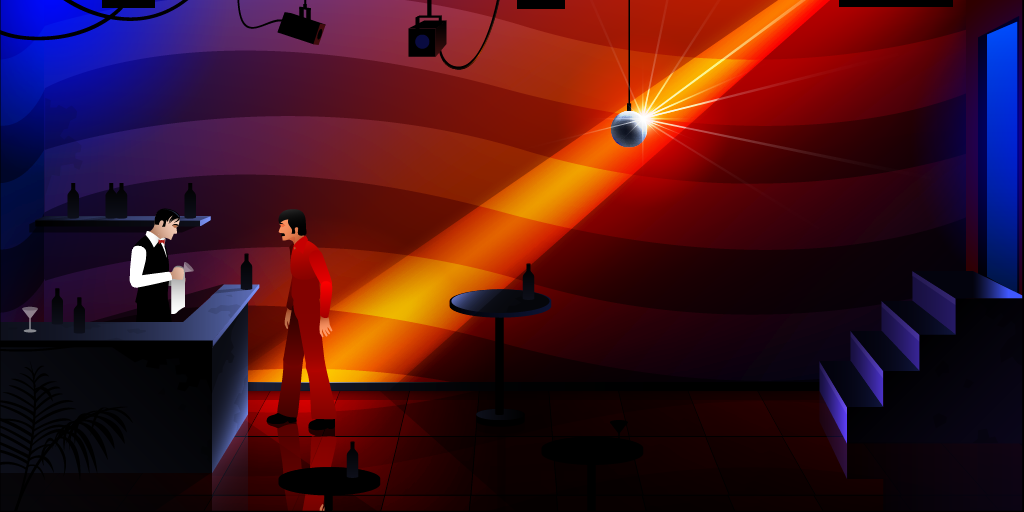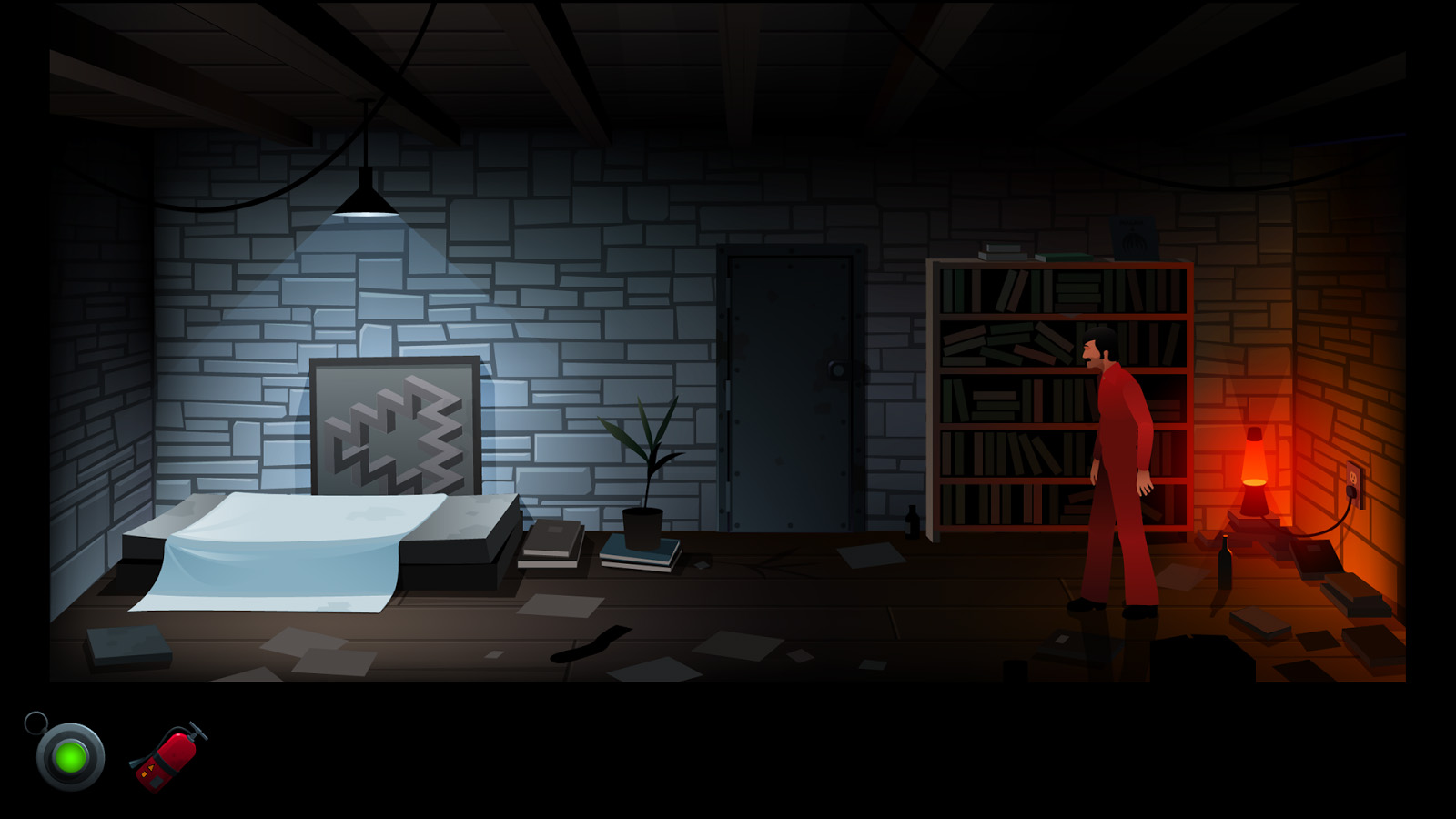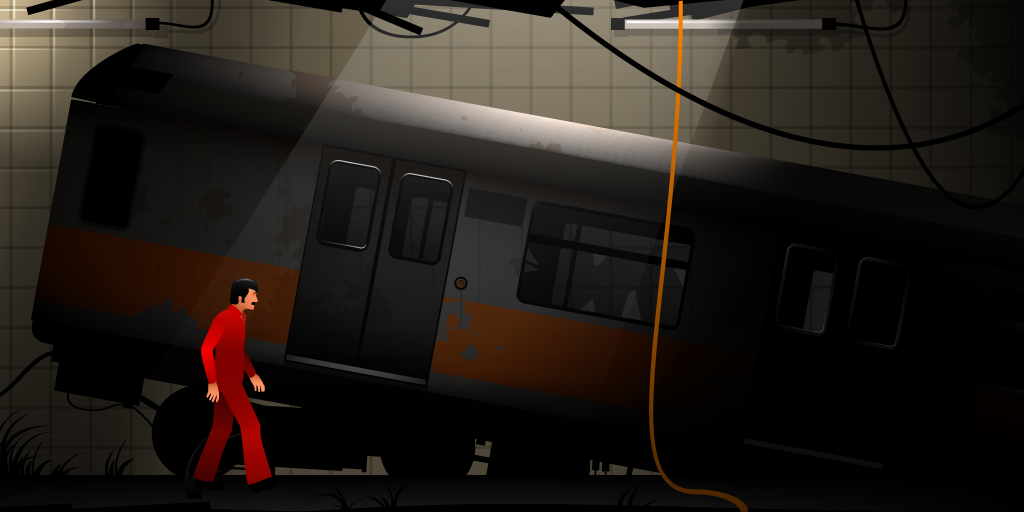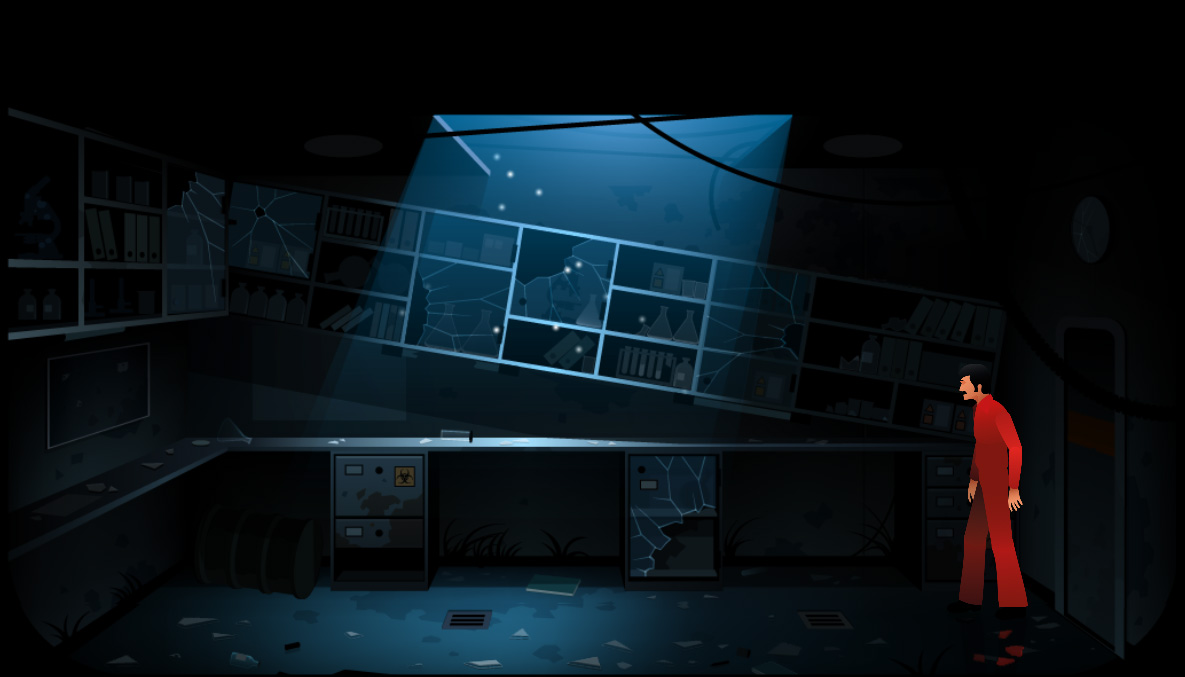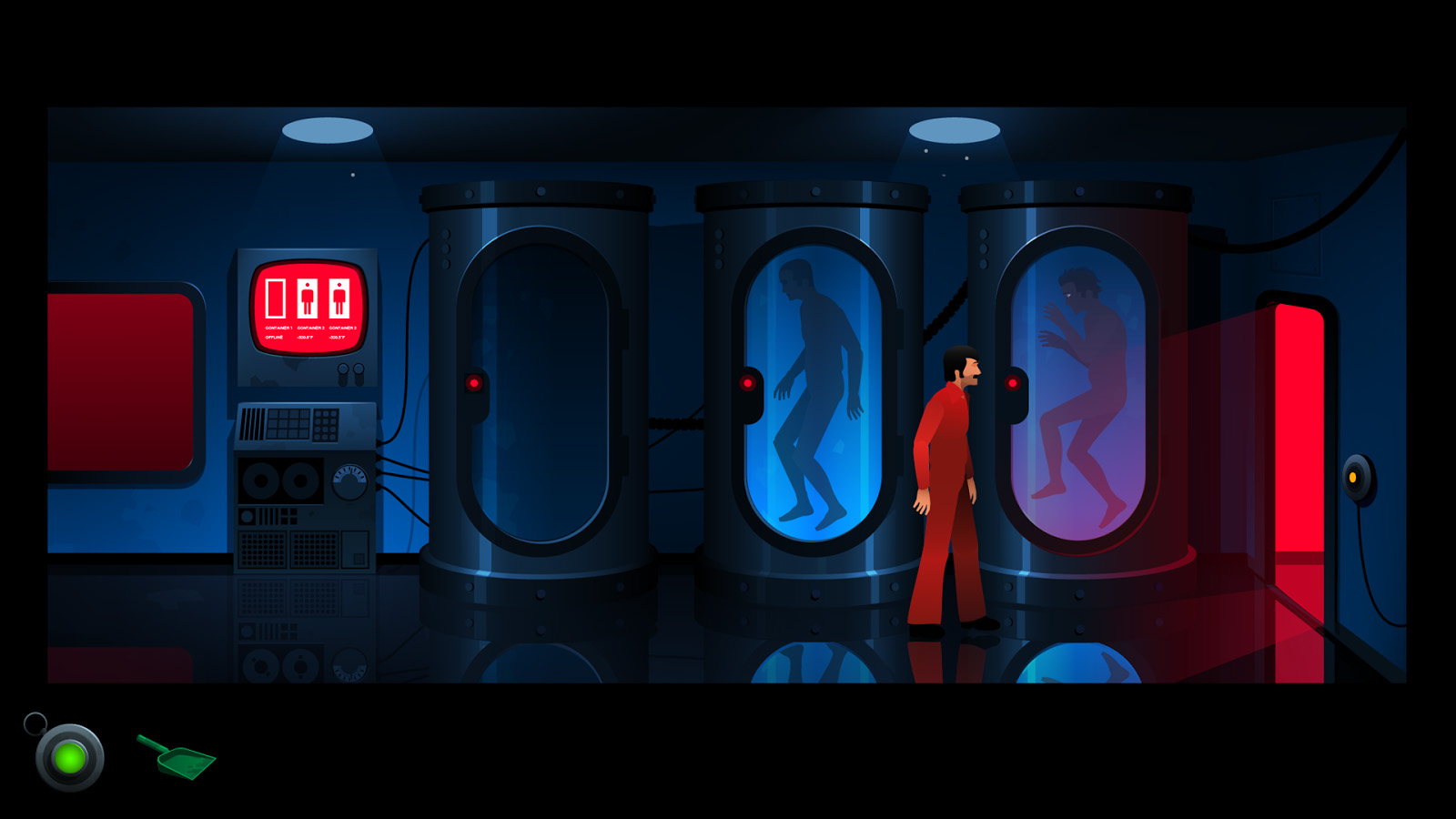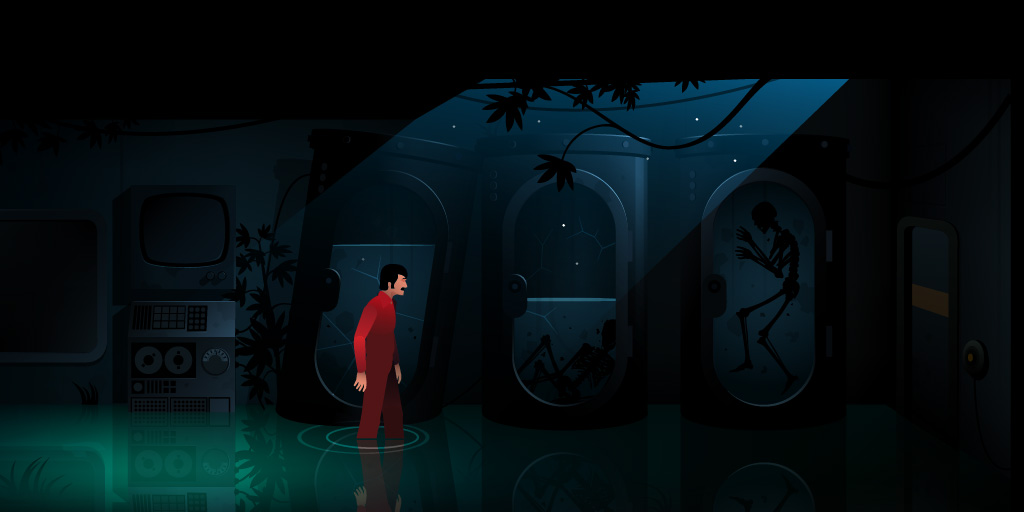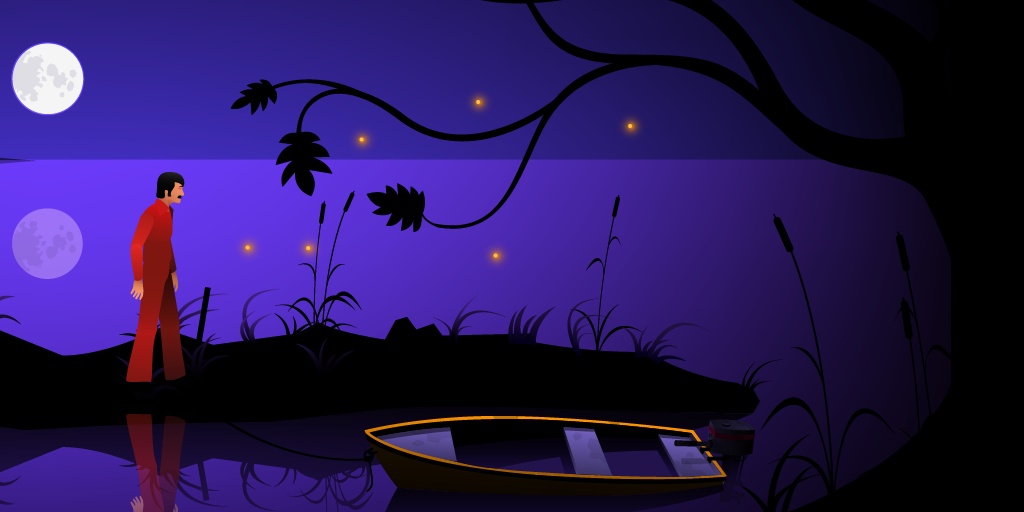The Silent Age: Episode Two is the concluding half of the game that I and my three other cohorts at House On Fire released in 2013. The conclusion was released in 2015. To date, the game has had over 8 million players and has been translated to five different languages.
As with the first episode, I’m the author of the story, narrative and dialogue. With the decision to add voice-over to both episodes of the game to coincide with the Steam release, I also did the casting, script preparation and direction of half a dozen voice actors.
With the jump to Steam and planned console releases, I also designed and specified the PC/console controls and in-game UI.
The game is available on:
Writing examples
Here are some examples of the writing and voice acting:
Note: The voice-over for Mr. Hill was done by seasoned voice actor Roger Jackson who sprung to cult-fame as the voice of Ghostface in the Scream movies.
Above: While trying to figure out how to break into a nearby government office building, Joe distracts the smooth-talking owner of a small night club to get his hands on an important tool for the job.
Screenshots
Some additional screenshots of the game’s stylized art, courtesy of Thomas Ryder:
Another writing example
The setting: In making his way out of the decaying city, Joe has spent the past 24 hours time-jumping between present and future, escaping police, local wildlife and crumbling buildings in order to find Reginald Lambert — the man who allegedly had a hand in mankind’s extinction and the only person who might know how to reverse it. Having finally found him cooped up in a lakehouse far from civilization, Joe gains his trust and manages to get some backstory from him:
I was 24 when I got hired by Archon, or “Athena”, as it was called back then. Athena was one of the many weapons R&D companies formed during the Second World War.
Unlike other R&D companies that had retooled themselves to pursue peacetime activities after the war, Athena had made enough money to continue chasing the “next big thing” in defense technologies.
They were betting the farm on post-war Soviet expansion raising the level of government paranoia to create a lucrative market for esoteric weapons research.I’d say they made the right bet.
Still a theoretical physicist at MIT, my thesis on the possibility of time travel via dimensional membranes got published shortly after I was hired in 1961.
Company heads were so impressed, they gave me a team and a budget. Development exceeded even my own expectations, and after only six years we had the first primitive version of the time machine up and running.Our first successful trials involved sending simple objects into the future with a timed return, but with Archon running out of money, that was all the company bigwigs needed to secure a big, fat contract with the Department of Defense.
Apparently we’d sold them on the idea that the technology could be used to go back in time and strangle communism in its cradle.
The reality, of course, was that it couldn’t.
Due to the laws of causality, you can’t travel back in time beyond the point where time travel was invented. And sooner or later, we’d have to explain that to our benefactors.
When they started pushing for progress reports, Archon management had to come clean, but instead chose to ease government concerns by claiming the technology could be used to bring back advanced weapons from the future.
But this, too, was a lie…
At this point we’d already had our first of many human trials and we knew there would be no weapons.
In fact, our results were as terrifying as they were baffling. Time pilots returned frenzied and confused, raving about empty streets and human remains.At first we assumed that the city had suffered a soviet attack in the near future and had been evacuated as a result, but as we pushed on further, the terrible reality became clear.
Time pilots started returning fatally ill – dying within a day or two from painful convulsions. Some never returned. We lost several pilots, machine prototypes and other equipment.
When the first contamination erupted in the lab, we were completely unprepared, losing three lab technicians to what we later identified as an incredibly aggressive airborne virus.
Although we weren’t equipped to handle biohazards of this magnitude, management insisted we contain and study it.
To keep our pilots – and the virus – alive long enough for study, we co-opted experimental cryo technology from another project, “Lazarus,” and established a makeshift virus lab.Once again, the bigwigs managed to spin our setbacks into a success story for the Department of Defense, now claiming that the virus could be cultivated for use as a biological weapon. The team threatened to resign, but outrage was swiftly quenched by promises of massive salary increases and stock options.
I didn’t take the bribe. I’d witnessed the lethal efficiency of the virus first hand.
I knew there was only one way this was going to end, so I handed in my resignation and set up shop out here. For over a year I’ve been working to recreate the technology to bring me back in time and prevent mankind’s extinction from ever happening.
…And now you’re here. The harbinger of doom at my doorstep. Wearing a boilersuit.
Who could have imagined that judgment day would begin like any other Monday in May?




